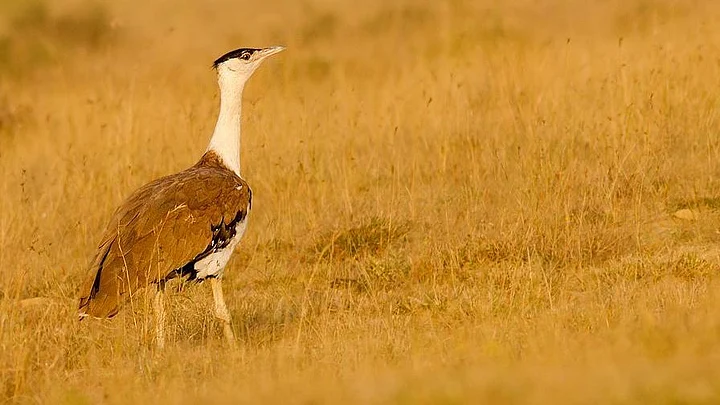Researchers at the Conference of Parties to the United Nations Convention to Combat Desertification (UNCCD COP 14) have warned that if desertification and the improper use of land continues at the current rate, it would lead to the extinction of many critically endangered species.
The Indian Cheetah and the pink-headed duck have been extinct for decades, as reported by The Hindu, primarily due to man-made factors such as hunting, habitat degradation, and predation. Now, other species face the threat of extinction as well.
“We have a database for more than 5.6 million specimens, collected from all over India and also from the neighbouring countries before Independence. They give a lot of information about how things have changed in more than 100 years,” Kailash Chandra, director of the Zoological Survey of India told ANI.
He added, “If you see their distribution in geo-spatial platforms, you'll realise how many changes have occurred because of the impact of deforestation and desertification.”
The researcher emphasised that 150 other species, who fall in the ‘critically endangered species’ category, are likely to follow suit in the future.
One more species, the Great Indian Bustard, has also been severely affected due to desertification, he added.
‘Regulation Is Key’
Chandra pointed out that insecticides, pesticides, conversion to agricultural land, industries, chemicals, and indiscriminate development are the primary reasons for desertification.
However, he maintained that putting a halt on development is not the solution. “Everything has to be regulated so that it could be minimised and we can reverse this process,” he said.
Chandra also said that the impact of desertification is not on animals alone but on biodiversity as a whole, from microscopic organisms to human beings.
The researchers stated that land degradation in not limited to India. This pattern is noticed worldwide as more than 30 percent of the land area has been degraded through deforestation, over-cultivation, soil erosion and the depletion of wetlands.
The Convention, which began earlier this week, came at a critical juncture when not only India but the entire world is facing problems regarding soil aridity, where some of the most vulnerable ecosystems can be found.
In May, a United Nations report had stated that nearly one million plant and animal species are on the verge of extinction, which will have alarming implications for human beings.
In recent times, ecosystems like coral reefs and mangroves, which shield their surroundings, have also been on the decline, reported Deccan Chronicle.
A few days ago, Prime Minister Narendra Modi had addressed the UNCCD conference in Greater Noida and said, “You will be shocked to know that desertification affects over two-thirds of countries of the world. This makes a compelling case for action on the land front combined with the action to address the water crisis facing the world. Because when we address degraded lands, we also address water scarcity issue.”
(With inputs from ANI, United Nations, Deccan Chronicle, The Hindu)
